Houseplant collections can be great places to express your creativity and think outside the box. While you can curate a collection of mixed plants, you can also stick to a theme and gather plants that coordinate together in some way. Houseplants can all be a single color or a single plant type like succulents, but if you love patterned plant leaves and polka dots, why not keep a collection of spotted houseplants?
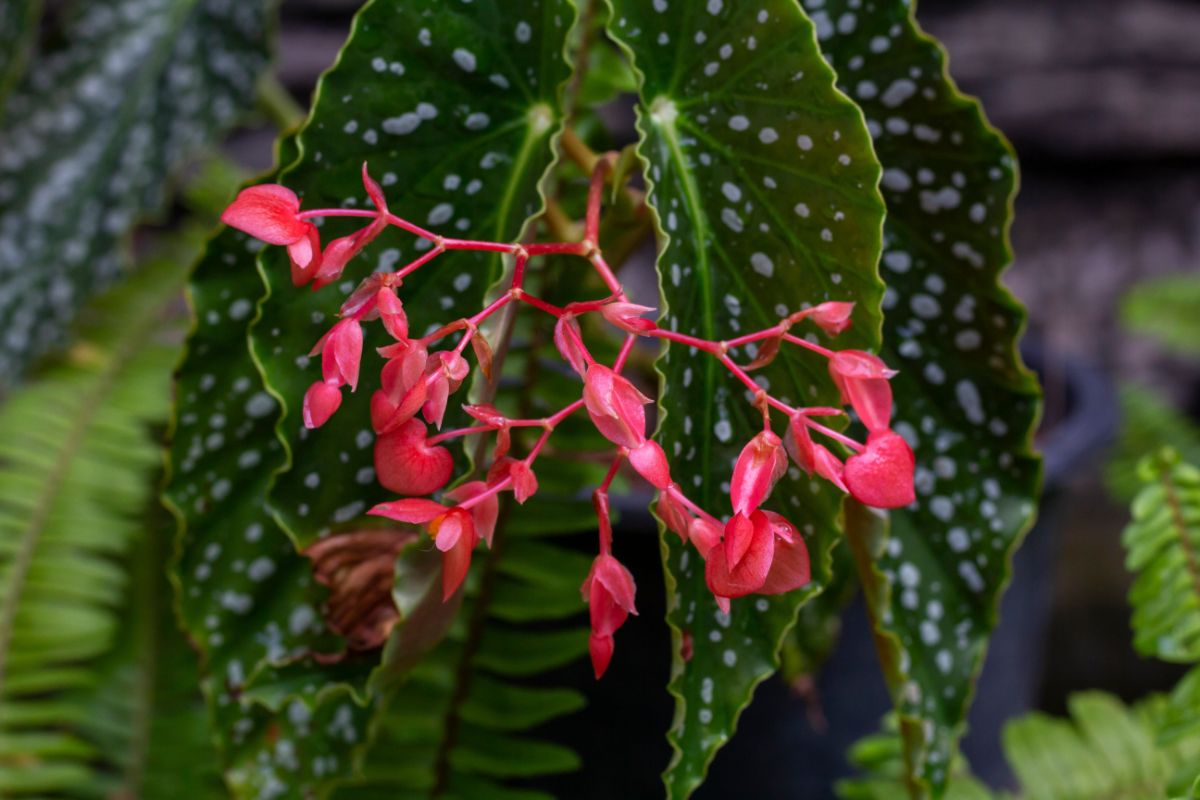
Plants with spotted or speckled leaves can be the darlings of any plant keepers’ home. And there’s actually a number of polka-dotted plants to pick from! In this guide, we’ll introduce you to 13 of the best-spotted plants, but keep a lookout at your local plant nursery because you may be able to find other polka-dotted plant types too.
Jump to:
- 13 spotted houseplants for polka dot lovers
- 1. ‘Polka Dot’ Begonia (Begonia maculata ‘wightii’)
- 2. Caladiums (Caladium spp.)
- 3. ‘Thai Constellation’ Monstera (Monstera deliciosa ‘Thai Constellation’)
- 4. Polka Dot Plant (Hypoestes phyllostachya)
- 5. ‘Florida Beauty’ Dracaena (Draceana surculosa)
- 6. Penwiper Plant (Kalanchoe marmorata)
- 7. Rabbit’s Foot Plant (Maranta leuconeura var. kerchoveana)
- 8. ‘Hallelujah’ Bromeliad (Bromeliad billbergia)
- 9. ‘Tiki’ Dieffenbachia (Dieffenbachia maculata)
- 10. Satin Pothos (Scindapsus pictus)
- 11. ‘Gold Dust’ Croton (Codiaeum variegatum)
- 12. Silver Squill (Ledebouria socialis)
- 13. ‘Milky Way’ Speckled Cast Iron Plant (Aspidistra elatior)
- Frequently asked questions
- Summary
13 spotted houseplants for polka dot lovers
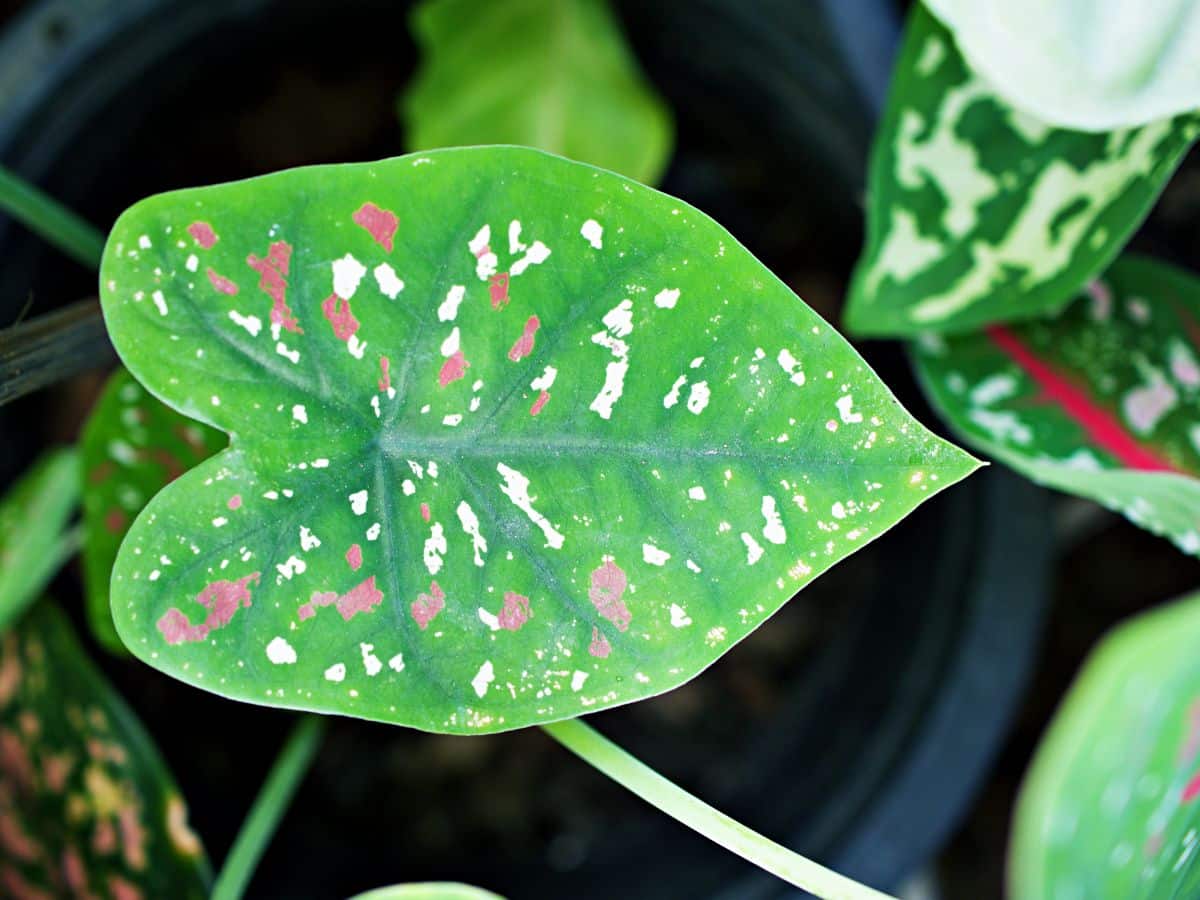
Many houseplants have patterned leaves, such as dracaena and calathea; however, most of these plants have striped foliage. Spotted plants are generally much harder to find, but there are a few stunning options that can often be purchased at your local plant nursery. Spotted plants can also be ordered online, so if you're having trouble finding plants with speckled leaves, you may want to search on the internet!
1. ‘Polka Dot’ Begonia (Begonia maculata ‘wightii’)
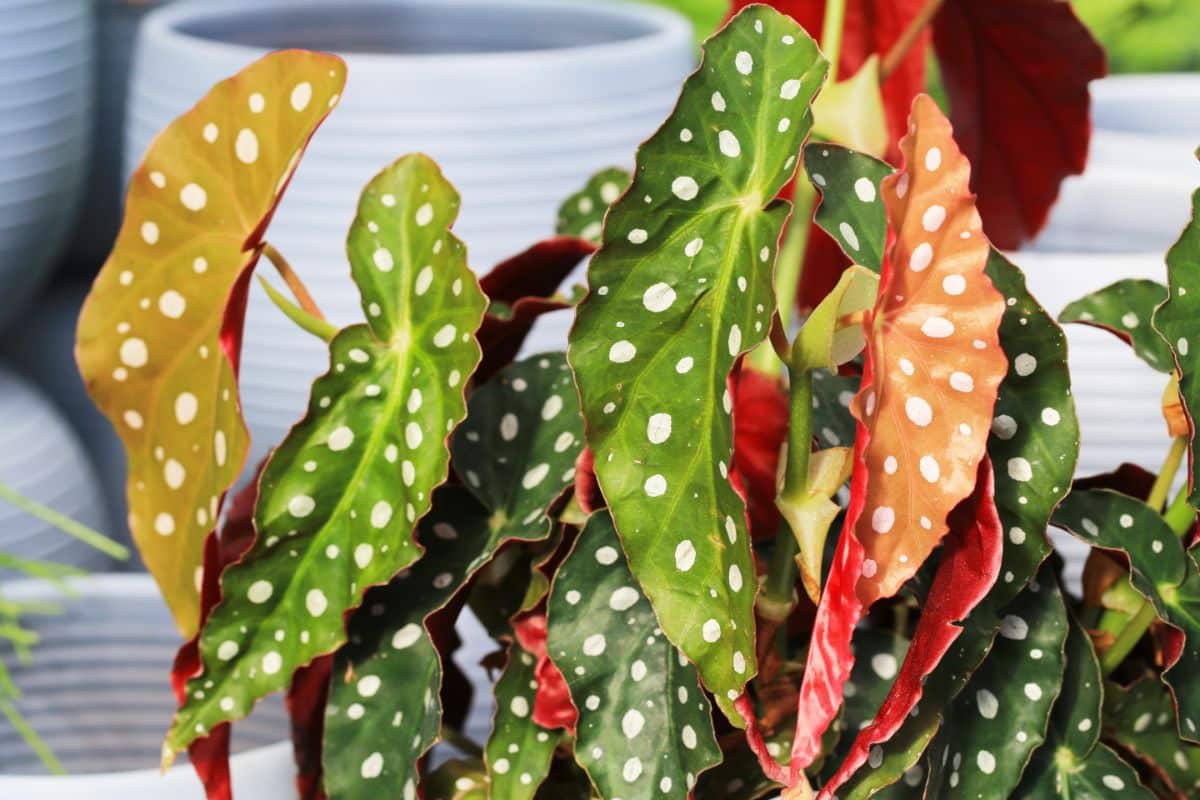
| Plant name: | ‘Polka Dot’ Begonia |
| Light requirements: | Bright, indirect light |
| Water requirements: | Moderate |
| Toxic to pets? | Yes |
| Special features: | Colorful flowers; Propagates easily |
The polka dot begonia is hands down, one of the best plants to keep if you love spotted houseplants. This striking specimen has dark green leaves that are ornamented by fine speckles in a pale grey to silver tone. Underneath, the leaves are a brilliant, burnt orange color, which adds something unexpected to houseplant collections, especially when the leaves are backlit by the sun!
Polka dot begonias are a variety of cane begonia, and they develop long, segmented stems as they grow, which look a bit like bamboo. When fully grown, polka begonias can reach about 2’ in height, and they will eventually flower a stunning display of white, pink, or coral blooms. These plants are also super easy to propagate in water or soil, so if you love them, you can create a lot more begonias from just a few cuttings!
If you like the look of polka dot begonias, you may also want to check out the similar-looking angel wing begonia (Begonia x corallina).
2. Caladiums (Caladium spp.)
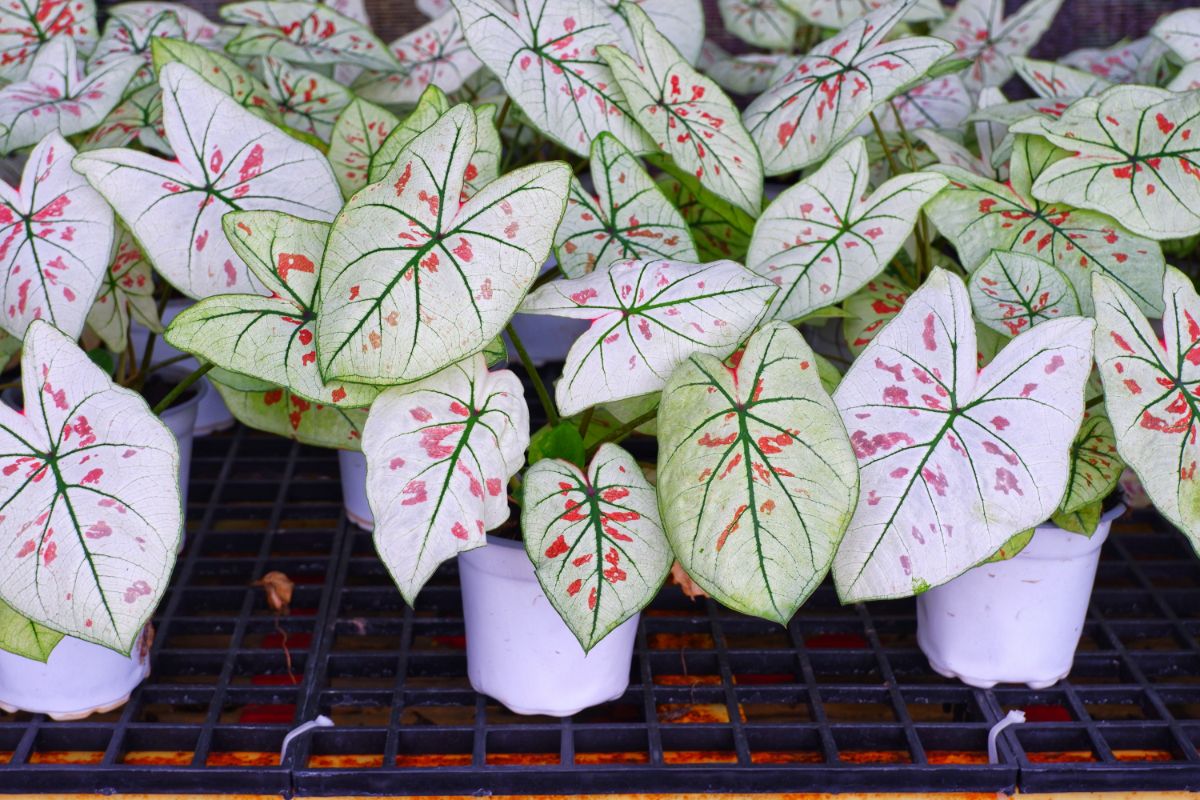
| Plant name: | Caladiums |
| Light requirements: | Bright, indirect light |
| Water requirements: | Moderate |
| Toxic to pets? | Yes |
| Special features: | Can be grown indoors or outdoors |
Caladiums are often grown outdoors as annuals, but they also make spectacular houseplants that are well-known for their gorgeous, colorful leaves. But while you find caladiums in a wide range of hues, there are several caladium types that have spotted leaves that polka-dot lovers will adore! ‘Marie Moir’ and ‘Strawberry Star’ are two caladium cultivars with speckled foliage, although you can find other varieties with ornamental spotting too!
Caladiums are relatively no-fuss plants when kept indoors, but they will do best in bright, indirect light, and they shouldn’t be grown in too much direct sun as this can cause leaf damage. If you can, locate your caladiums in front of a moderately bright window, so you can appreciate the way their thin leaves catch the light. Additionally, because caladiums benefit from extra humidity, you may want to place your plant on a pebble tray to avoid crispy leaves.
3. ‘Thai Constellation’ Monstera (Monstera deliciosa ‘Thai Constellation’)
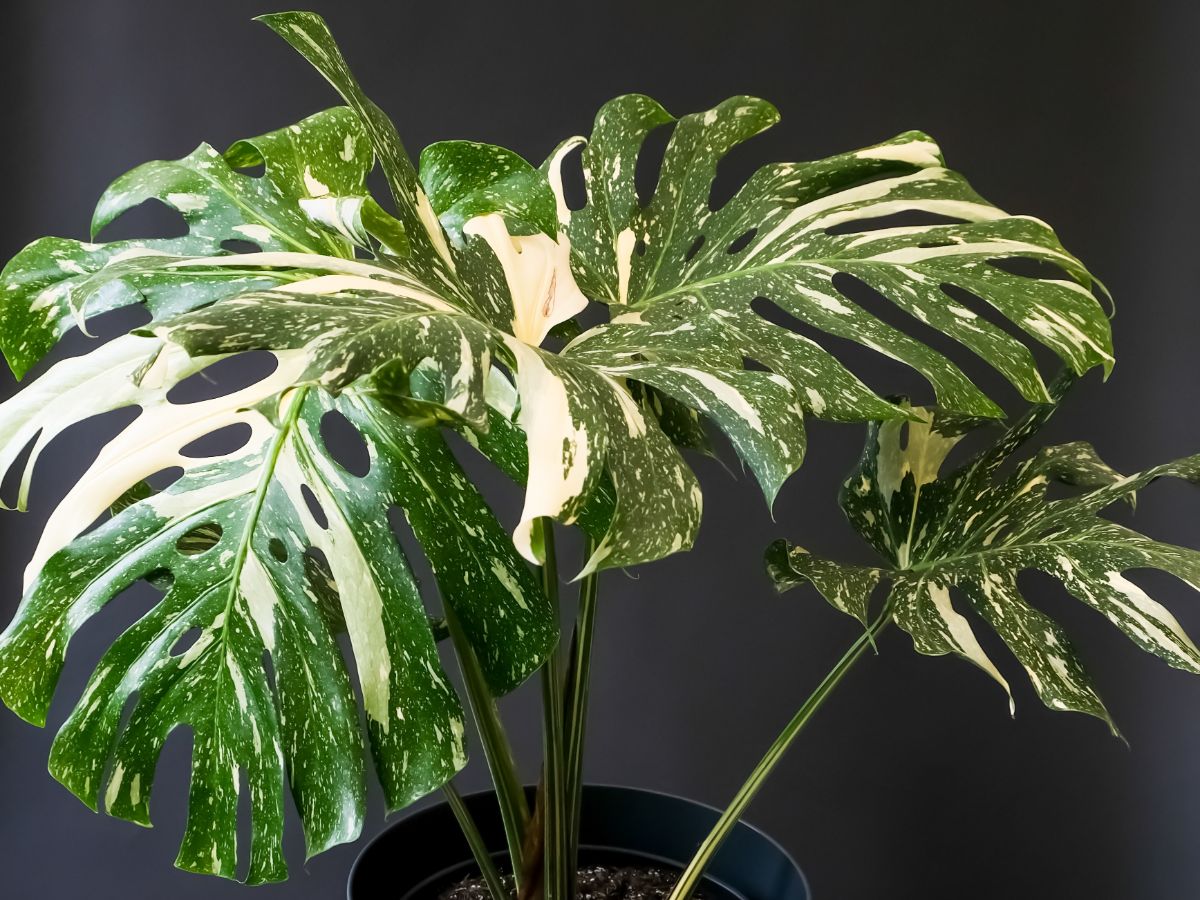
| Plant name: | ‘Thai Constellation’ Monstera |
| Light requirements: | Bright light |
| Water requirements: | Moderate |
| Toxic to pets? | Yes |
| Special features: | Large size |
Monsteras are one of the most popular houseplants around, and their distinctly shaped leaves are often emblazoned on clothing, linens, and coffee mugs. But if love spotted plants, the monstera you need to look for is ‘Thai Constellation.’ This speckled beauty has highly variegated leaves with both large and small spots of white on a rich, green leaf background.
‘Thai Constellation’ can be more expensive than other monstera varieties, and it is rarely sold in stores. But if you love the look of this plant, you can often find cuttings or potted plants for sale online. Like other monstera, ‘Thai Constellation’ can get massive, and plants can grow up to 8’ tall!
4. Polka Dot Plant (Hypoestes phyllostachya)
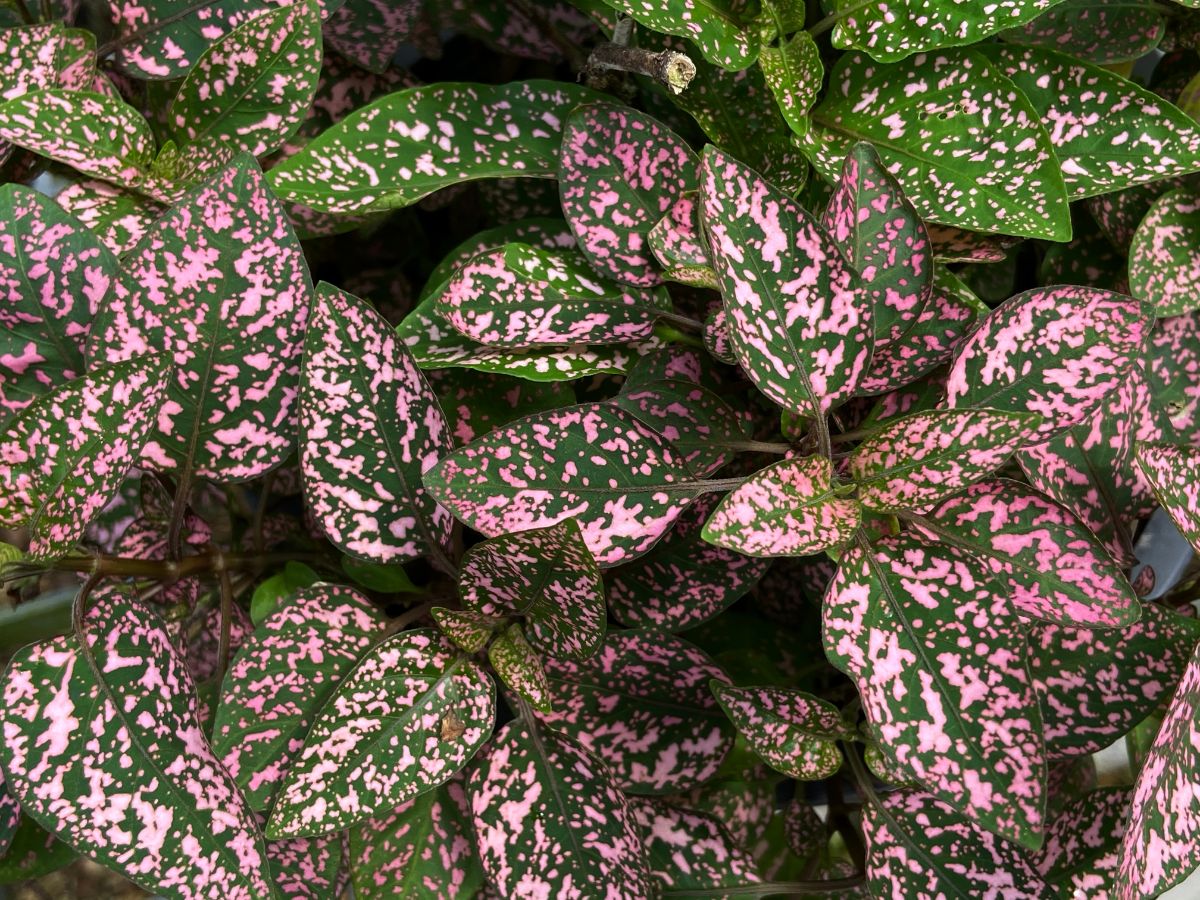
| Plant name: | Polka Dot Plant |
| Light requirements: | Bright, indirect light |
| Water requirements: | Moderate; requires high humidity |
| Toxic to pets? | No |
| Special features: | Good for terrariums; Pet safe |
When it comes to spotted plants, polka dot plant is one of the most famous and charming indoor plants you can find. While you can grow this species outdoors in warmer climates, it is a common sight in houseplant stores because it is just so easy to grow. Plus, it is a stunning foliage plant with colorful, spotted leaves that you can’t help but love!
Polka dot plants usually have green leaves with pink spotting, but you can find varieties with white or red spots too. Mature plants can grow up to 2’ tall, but they often stay much smaller, and they are easy to grow for beginners. Just keep in mind that these plants are humidity lovers, but they are small enough to keep in terrariums, which is a good solution if you have a very dry home and don’t want to use a humidifier.
5. ‘Florida Beauty’ Dracaena (Draceana surculosa)
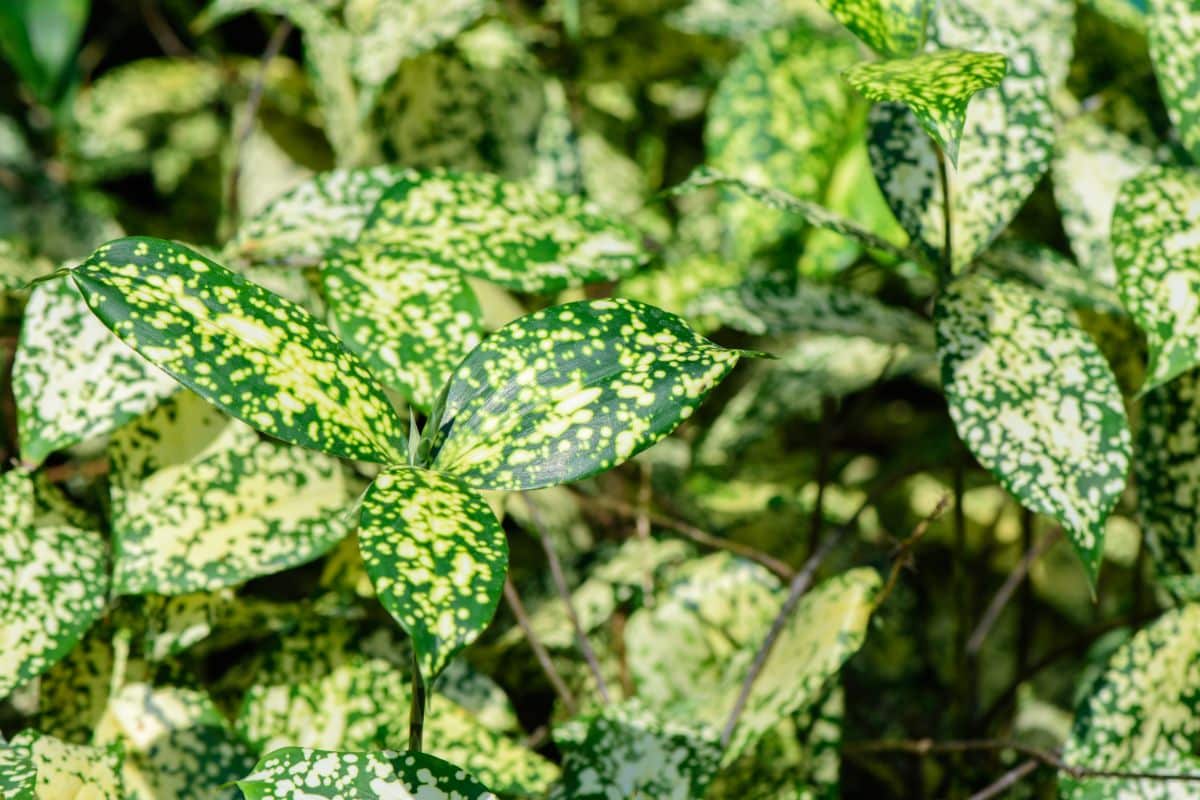
| Plant name: | ‘Florida Beauty’ Dracaena |
| Light requirements: | Bright, indirect light |
| Water requirements: | Moderate |
| Toxic to pets? | Yes |
| Special features: | Easy care |
There are about 120 different types of dracaena, including the ever-popular corn plant dracaena and the dragon tree dracaena. But if you’re looking for more spotted plants to add to your collection, ‘Florida Beauty’ is the dracaena for you. This plant has deep green, lance-shaped leaves that are heavily spotted in a brilliant white that is sure to spice up any home décor.
While ‘Florida Beauty’ is an easy-care houseplant, it can also be grown outdoors in zones 9 to 11. To preserve the variegation of ‘Florida Beauty’ leaves, make sure you locate your plant in an area of your home that receives bright, indirect light. When mature, ‘Florida Beauty’ will grow to about 3’ tall, and it can flower small, greenish-white blooms that are tubular in form.
6. Penwiper Plant (Kalanchoe marmorata)
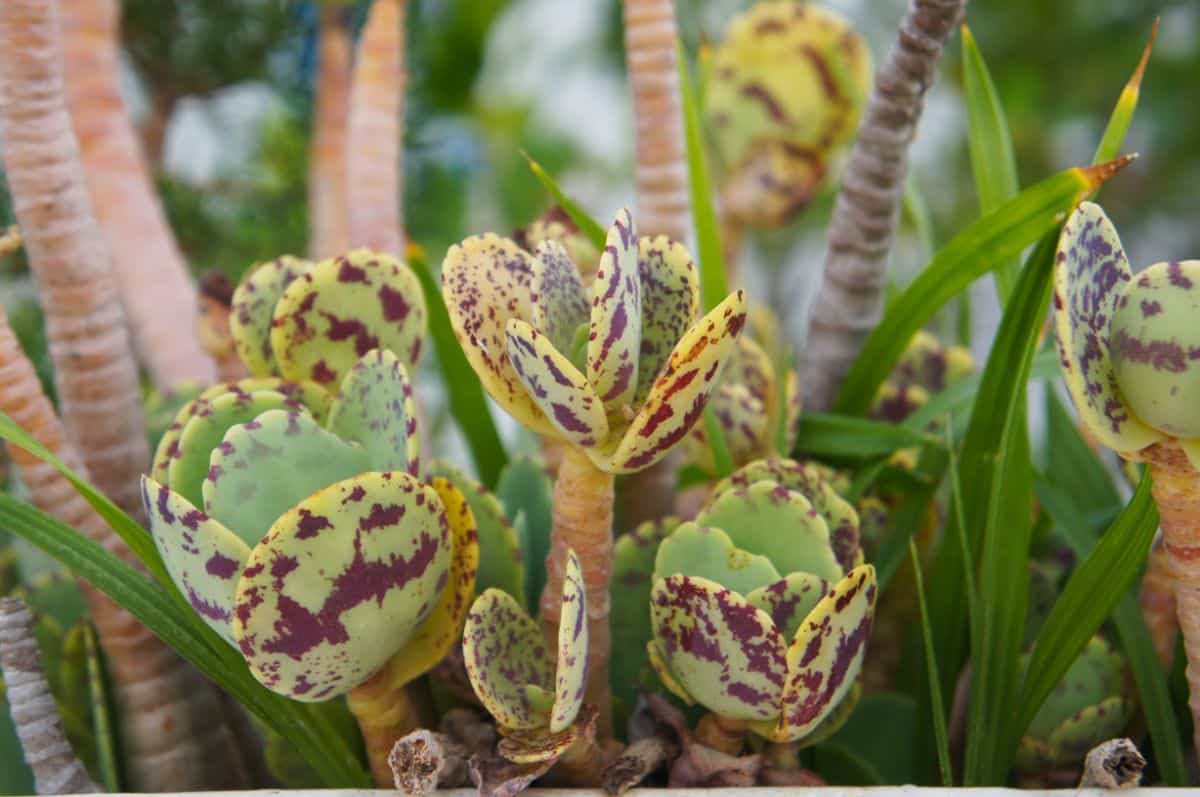
| Plant name: | Penwiper Plant |
| Light requirements: | Bright light |
| Water requirements: | Low |
| Toxic to pets? | Yes |
| Special features: | Minimal watering needs; Easy care |
The penwiper plant is a less commonly grown succulent, but it has colorful, variegated leaves that are sure to please anyone who loves spotted plants. You may be able to find this specimen for sale at local nurseries, but because it is more rare, it is often easier to purchase it online. This plant’s Latin name, “mamorata,” comes from the root word for “marble,” which is a reference to the penwiper plant’s spotted leaves.
Like other succulents, penwiper plants grow best in a well-draining potting mix that’s suitable for desert-dwelling plants. It also has minimal watering needs, which makes it a good choice for anyone who struggles with remembering to water their plants. Place this plant in bright light to preserve its leaf color and prevent stems from getting leggy.
7. Rabbit’s Foot Plant (Maranta leuconeura var. kerchoveana)
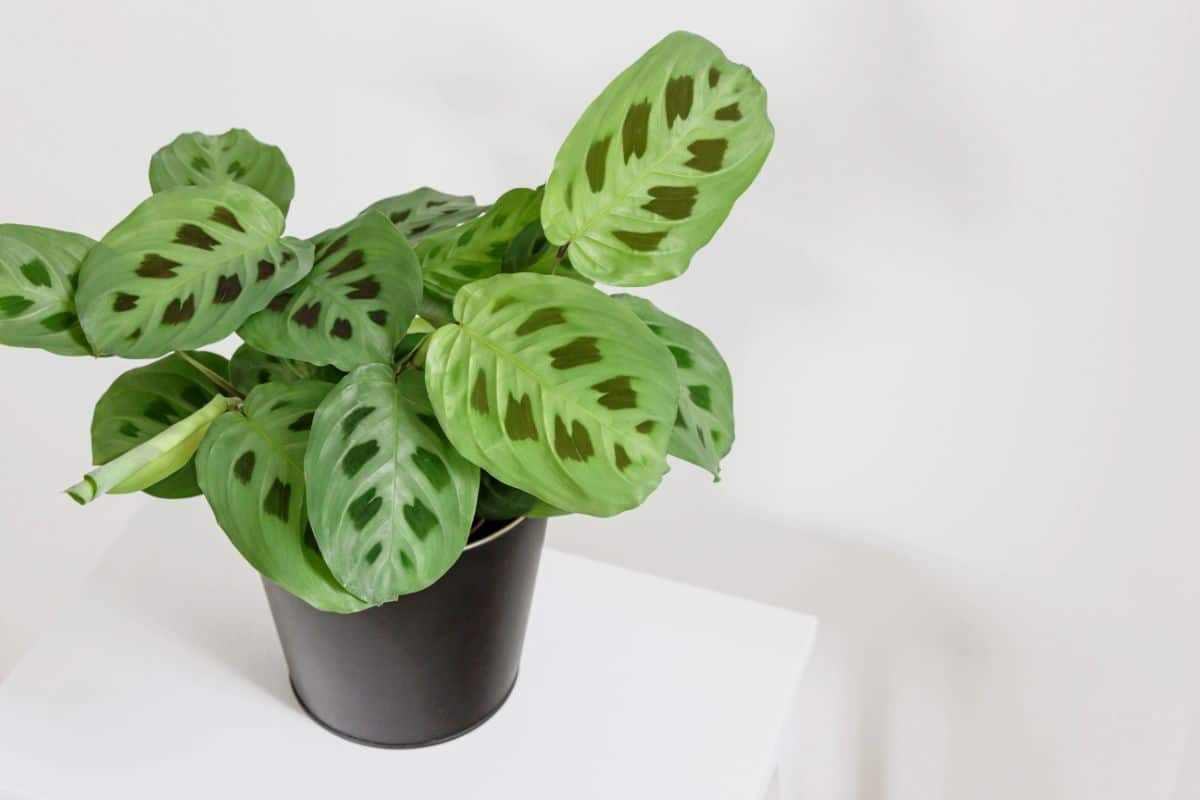
| Plant name: | Rabbit’s Foot Plant |
| Light requirements: | Bright, indirect light |
| Water requirements: | Moderate |
| Toxic to pets? | No |
| Special features: | Good for hanging planters; Leaves move with the light; Pet safe |
The rabbit’s foot plant is a variety of prayer plant, but it has more subtly colored leaves that feature dark splotches that are said to look like the footprints of a rabbit. While this patterning isn’t a classic polka dot, it does create enough visual interest that it will add something different to a potted plant collection. Plus, like other prayer plants, the rabbit foot plant has leaves that move with the light for even more excitement.
Prayer plants’ leaves turn upwards in the evening to conserve moisture and keep their leaves from drying out. These plants will also occasionally flower with blooms that range from white to purple in tone. Rabbit’s foot plant is sometimes called the green prayer plant, and it looks equally beautiful as a tabletop plant or when potted up in a hanging basket.
8. ‘Hallelujah’ Bromeliad (Bromeliad billbergia)
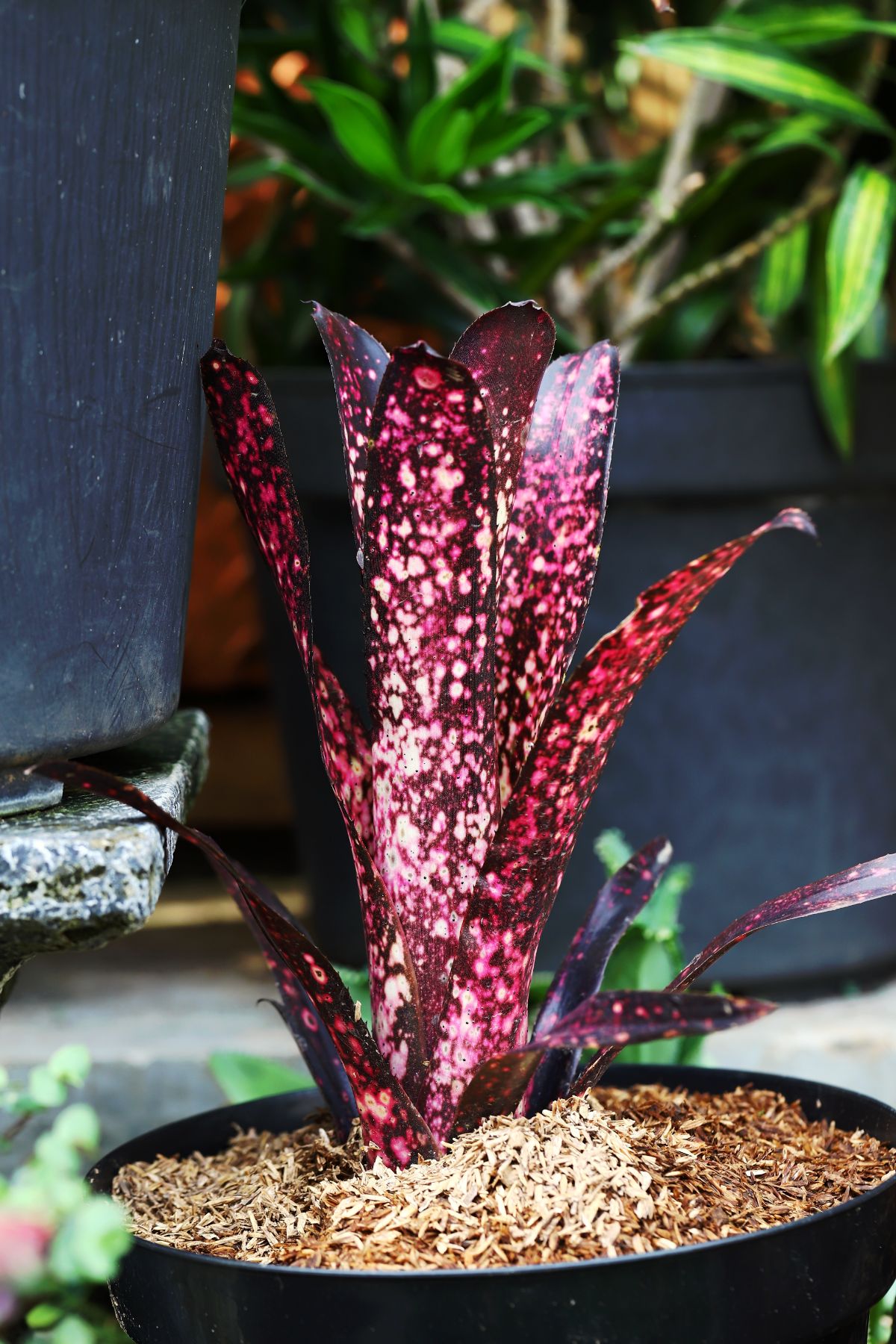
| Plant name: | ‘Hallelujah’ Bromeliad |
| Light requirements: | Bright to bright, indirect light |
| Water requirements: | Moderate; requires high humidity |
| Toxic to pets? | No |
| Special features: | Large, showy flower; Pet safe |
If you’re looking for a houseplant that will really “wow” visitors, ‘Hallelujah’ has everything you could want. This plant has finely speckled leaves that are a vivid, purplish-pink color. Plus, it can also produce a showstopping, oversized flower that has bright red, white, and blue accents.
Like other bromeliads, ‘Hallelujah’ only blooms once, and then the plant will die back. But there’s no reason to fret because bromeliads often produce several “pups” or baby plants before they fade, so you can keep your plant going for generations. ‘Hallelujah’ is a relatively rare bromeliad type, which means you may have better luck finding your plant online than at a local nursery.
9. ‘Tiki’ Dieffenbachia (Dieffenbachia maculata)
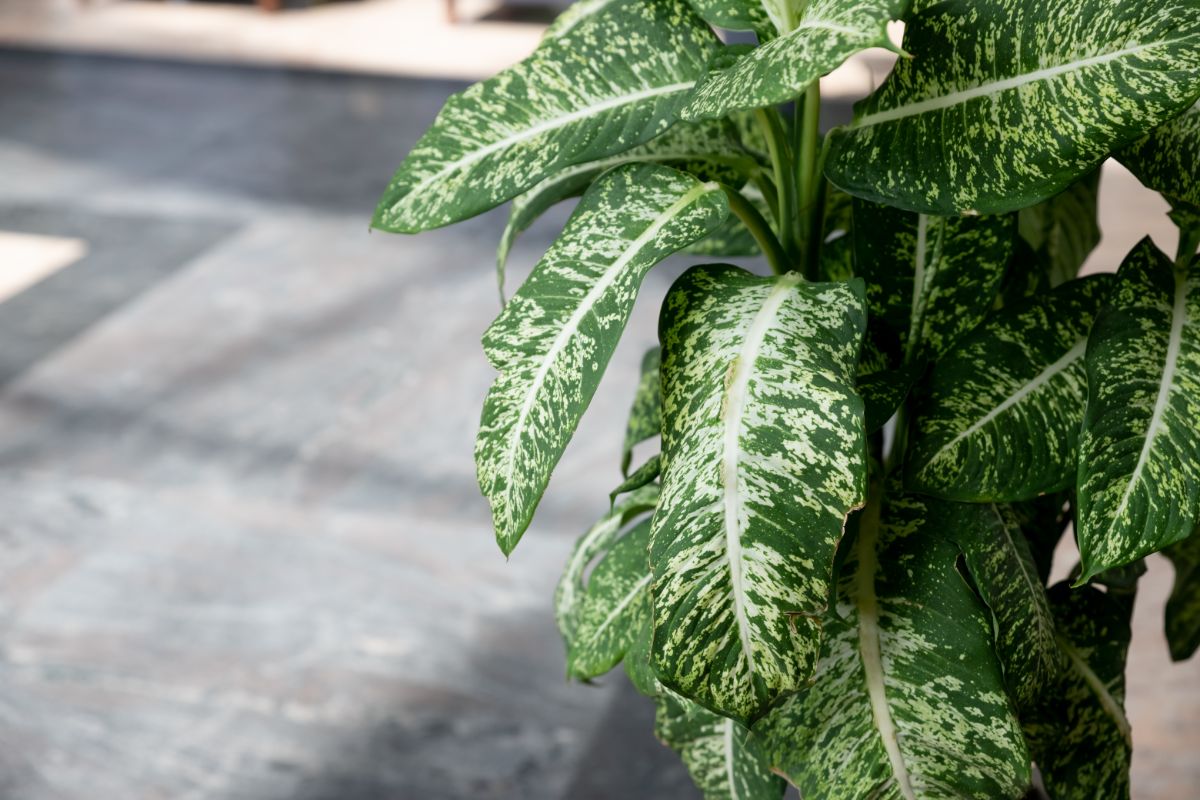
| Plant name: | ‘Tiki’ Dieffenbachia |
| Light requirements: | Bright, indirect light |
| Water requirements: | Moderate |
| Toxic to pets? | Yes |
| Special features: | Easy care |
Many different dieffenbachia types have patterned leaves with spots, but the leaves of the ‘Tiki’ dieffenbachia have some of the most distinct coloration. Like other dieffenbachia, ‘Tiki’ is a very low-maintenance plant, and even beginning growers should have no trouble keeping it. Just provide these plants with medium light and regular watering, and they should be good to go.
Dieffenbachias are sometimes called dumbcanes, which is a reference to the unpleasant sensation that occurs when this plant is ingested. So, it should be no surprise that these plants are on the “toxic” list according to the ASPCA, and they should be kept away from pets and small children. While ‘Tiki’ can occasionally flower, it is very rare, and growing conditions need to be nearly perfect for this to occur.
10. Satin Pothos (Scindapsus pictus)
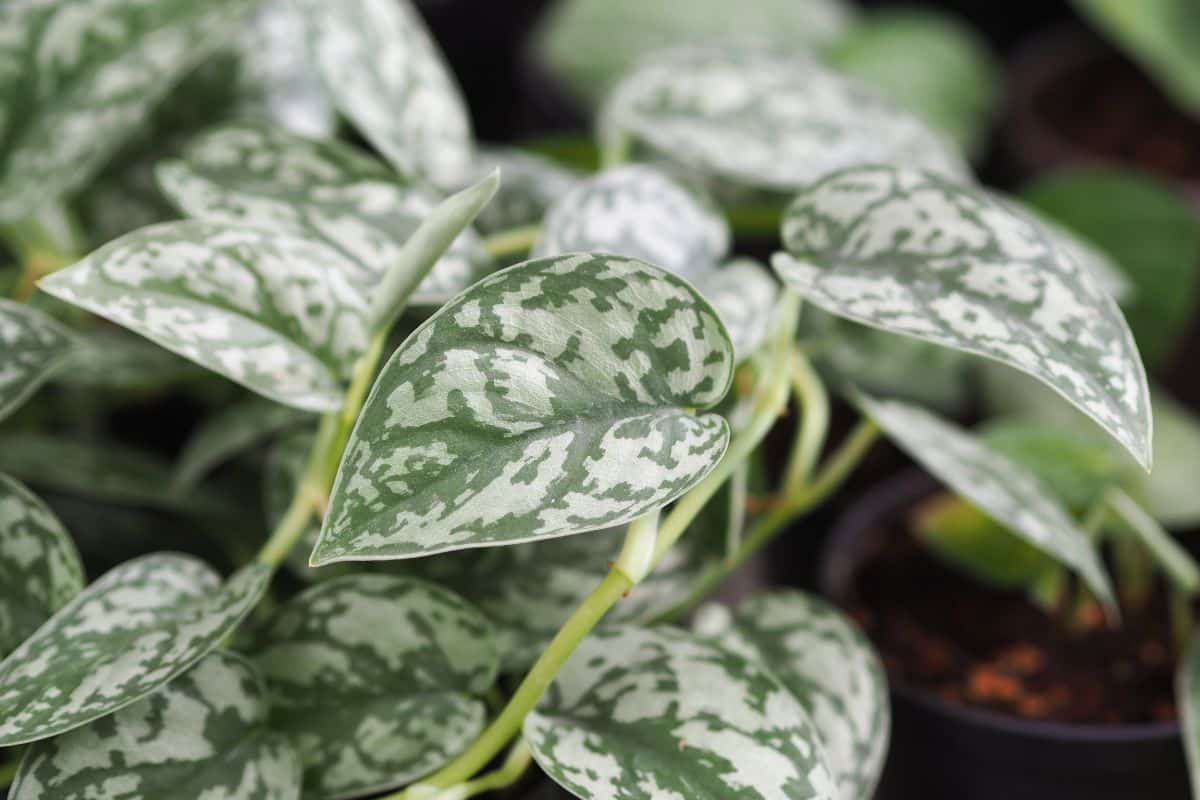
| Plant name: | Satin Pothos |
| Light requirements: | Bright, indirect light |
| Water requirements: | Moderate |
| Toxic to pets? | Yes |
| Special features: | Good for hanging planters; Propagates easily; Easy care |
Satin pothos is a close relative of the ever-popular golden pothos, but this variety has silvery leaves with lots of spots. Like other pothos, satin pothos has a trailing growth habit, and it looks absolutely stunning in hanging baskets, but it can also be pruned to grow as a tabletop plant. This plant roots easily in water or soil too, so if you’d like to create a fuller-looking plant, pot up a few vines in a single pot.
When fully grown, satin pothos vines can stretch over 10’ long, although they usually stay about 4’ in length. These plants can be trained to climb up trellises or moss poles if you’d like to keep your satin pothos from spreading. Pothos grow best in bright, indirect light, and they should never be kept in soggy soil as they are prone to root rot.
11. ‘Gold Dust’ Croton (Codiaeum variegatum)
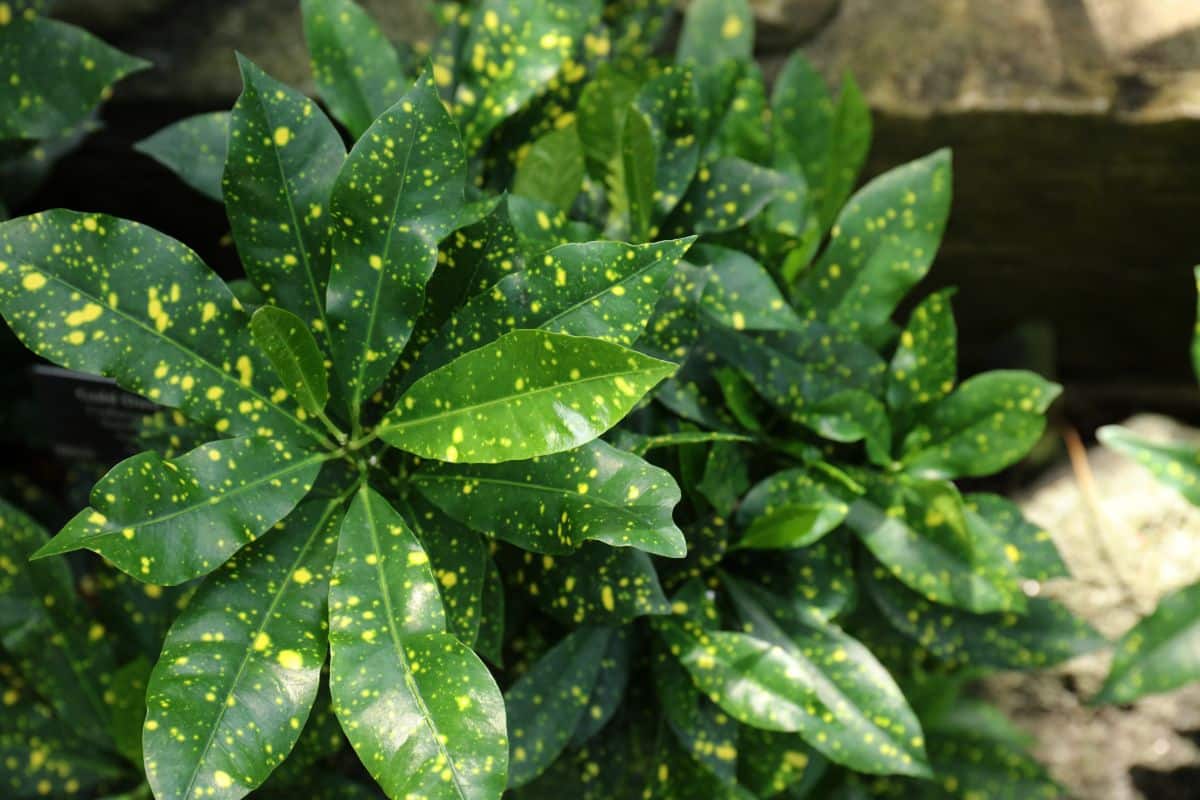
| Plant name: | ‘Gold Dust’ Croton |
| Light requirements: | Bright, indirect light |
| Water requirements: | Moderate |
| Toxic to pets? | Yes |
| Special features: | Can be grown indoors or outdoors; Easy care |
Crotons are commonly used in outdoor planting arrangements in autumn, and they are prized for their colorful leaves. There are over 100 different types of crotons – some with large patches of bright colors and others with more mild leaf tones. But if you’re on the hunt for spotted plants, ‘Gold Dust’ croton is the variety you need to be looking for.
Full-grown ‘Gold Dust’ plants grow to about 3’ tall, and they will enrich your houseplant collection with their yellow spotted leaves. Croton stems become woodier as they age, giving the plant a sturdy and tree-like look. However, crotons can be prone to scale and mealybugs, so if you place houseplants outside in summer, be sure to check crotons over carefully before bringing them back indoors.
12. Silver Squill (Ledebouria socialis)
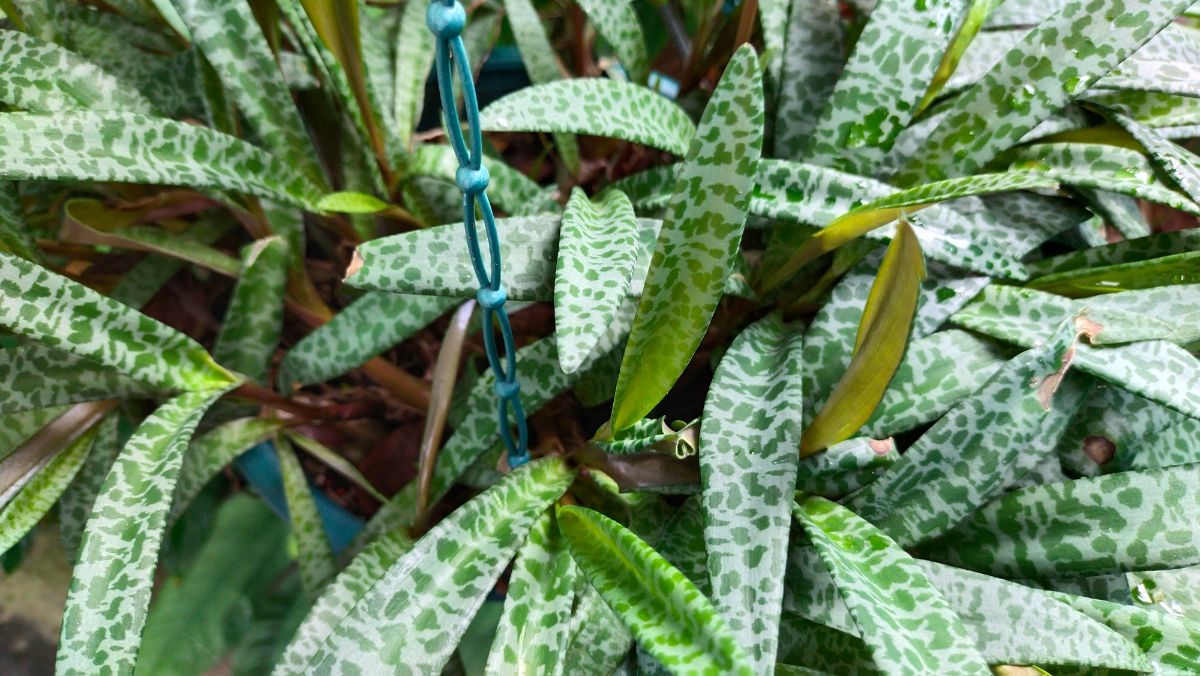
| Plant name: | Silver Squill |
| Light requirements: | Bright, indirect light |
| Water requirements: | Low |
| Toxic to pets? | Yes |
| Special features: | Minimal watering needs |
Silver squill isn’t the most common houseplant, but it is easy enough to find, and you can often purchase them at big box stores or local nurseries. These plants are notable for their finely patterned leaves that feature contrasting green spots. Silver squills will also bloom in spring with striking green and pink flowers that appear at the ends of long, slender stems.
Silver squills are often miscategorized as succulents because they are so drought tolerant, but they are actually members of the Asparagus family. But don’t let their family name fool you! Silver squills are very toxic if ingested, and they should be kept far away from cats, dogs, and small children.
13. ‘Milky Way’ Speckled Cast Iron Plant (Aspidistra elatior)
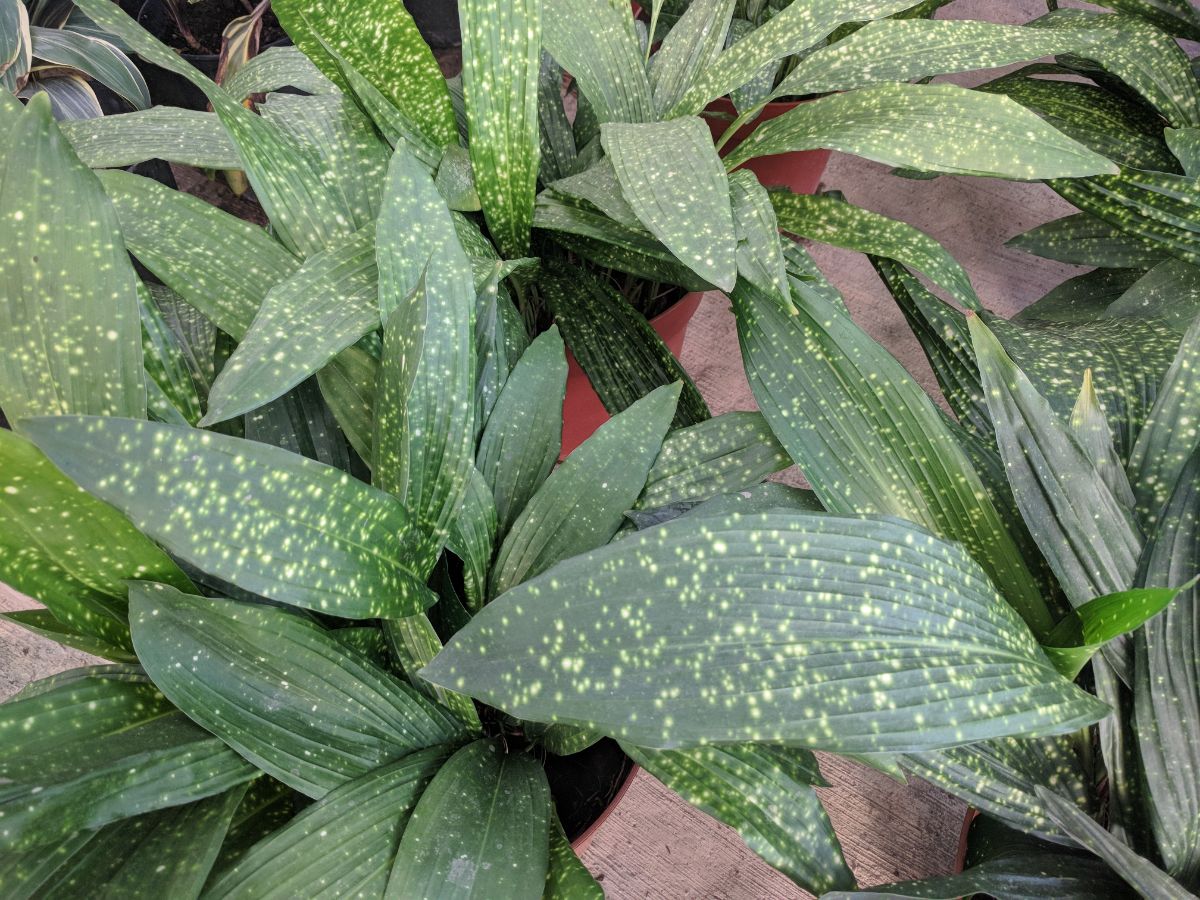
| Plant name: | ‘Milky Way’ Cast Iron Plant |
| Light requirements: | Bright, indirect light to low light |
| Water requirements: | Low |
| Toxic to pets? | No |
| Special features: | Tolerates low light; Minimal watering needs; Pet safe |
Cast iron plants have been popular houseplants since the Victorian age, and they are well-known for their hardiness and low maintenance needs. In fact, it’s said these plants are so resilient, they’re as tough as “cast iron!” Cast iron plants need minimal water, and they can even thrive in low-light rooms where many other plants won’t grow.
Most cast iron plants have deep green, lance-shaped leaves, but ‘Milky Way’ cast iron plants offer something more! These plants have fine, white speckling all over their leaves, which resembles the twinkling stars in the Milky Way galaxy. Cast iron plants can occasionally flower, but it is rare for them to do this when they’re kept indoors.
Frequently asked questions
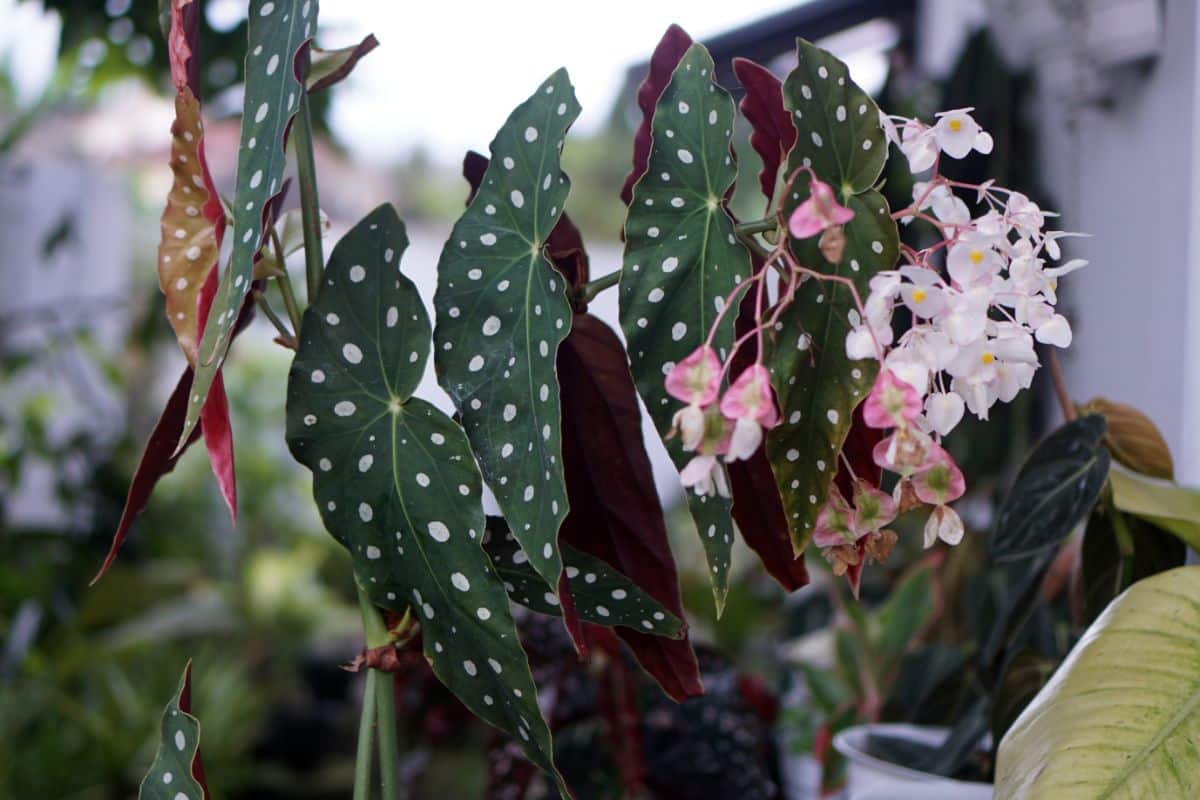
Polka dot plants are considered to be very beginner friendly, and they can make excellent houseplants as long as you have a basic understanding of their care requirements. Specifically, polka dot plants love LOTS of humidity, and they often suffer from dry, indoor air. To avoid this, keep polka dot plants on a pebble tray or near a humidifier or add them to an enclosed terrarium, which will keep humidity levels from fluctuating.
Polka dot plants have a relatively short lifespan and typically live about 1 to 2 years indoors with proper care. These plants can be propagated via stem cuttings, though, which will allow you to keep polka dot plants for much longer.
Several different orchids have spotted flowers, and they can make colorful additions to houseplant collections with other polka-dotted plants. Additionally, while hoya flowers aren’t exactly spotted, their contrasting colors give the appearance of polka dots from a distance.
If you adore polka dots, you can expand your spotted houseplant collection to the outdoors! Some of the best outdoor plants with spotted leaves include lungwort, trout lilies, and certain varieties of calla lilies. Caladiums, polka dot plants, and ‘Gold Dust’ crotons are also suitable for growing outside in warmer climates or in potted arrangements.
Many plants are variegated due to genetics, but you can maintain the look of variegated plants by ensuring they receive enough water, fertilizer, and light. Most variegated plants will grow best in bright but indirect sun, which supports variegation. It’s often best to avoid direct sun exposure with these plants, as too much light can often result in sun-damaged leaves.
Many different houseplants have striped leaves, such as dracaena, spider plants, oyster plants, some calatheas, and snake plants. Combining spotted and striped plants in a single houseplant collection can create an interesting and playful look with lots of leaf patterning and color.
Summary
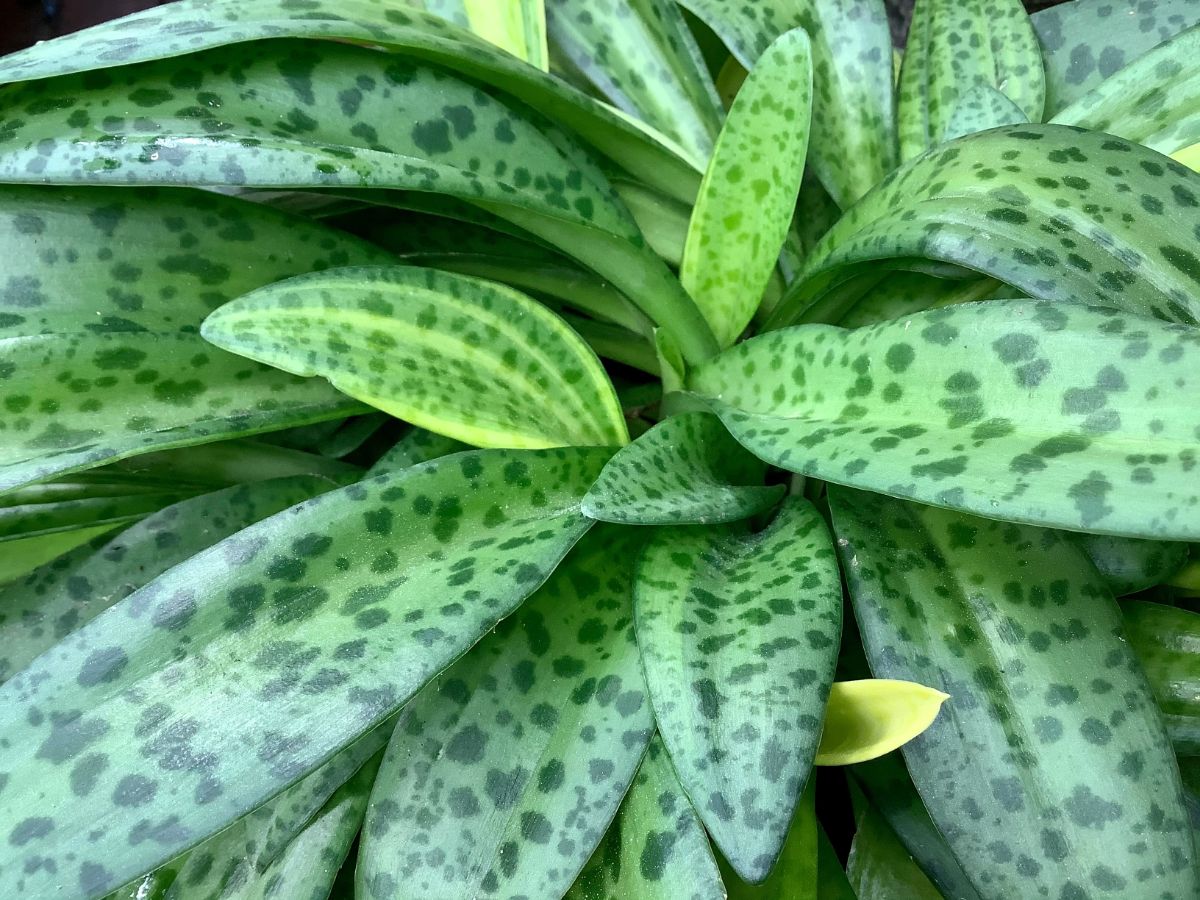
There are a lot of reasons why you may want to collect polka dot plants. Maybe you just enjoy the pattern, or the thought of speckled plants makes you happy. Or perhaps you already have a theme of patterned plants going in your collection.
Whatever the reason, there are plenty of spotted plants to add to your home, which will enrich your plant shelves with color, texture, and the perfect amount of whimsy! We hope you enjoyed learning about spotted plants, but if you’d like to find more plants with fun foliage, check out our guide on houseplants with striped leaves!

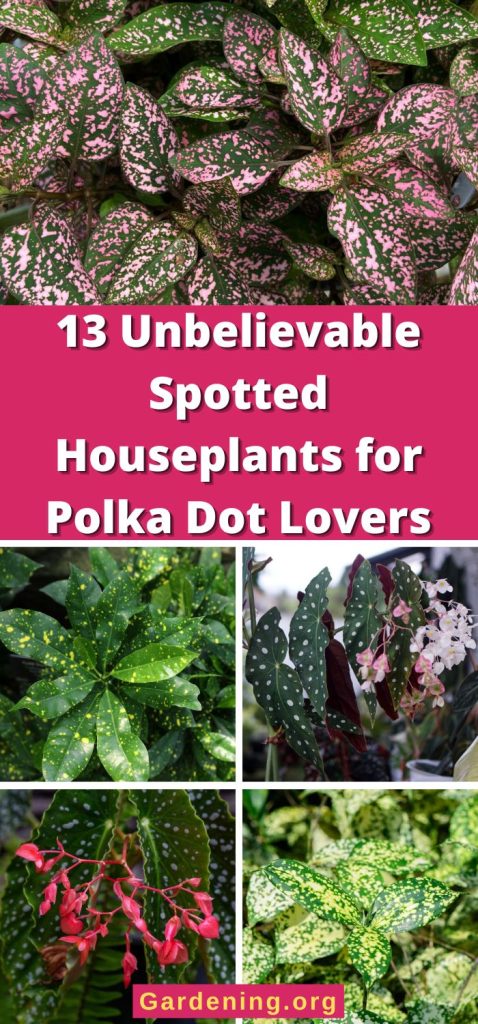
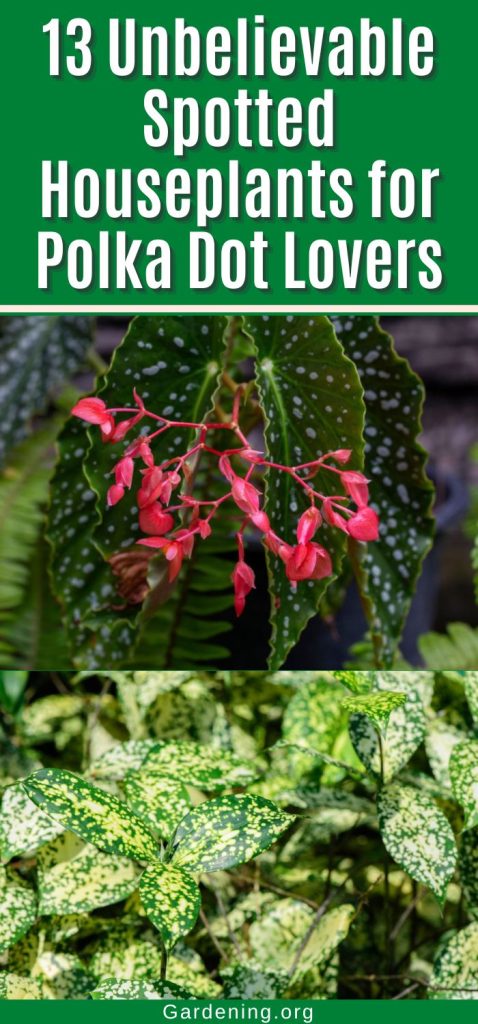
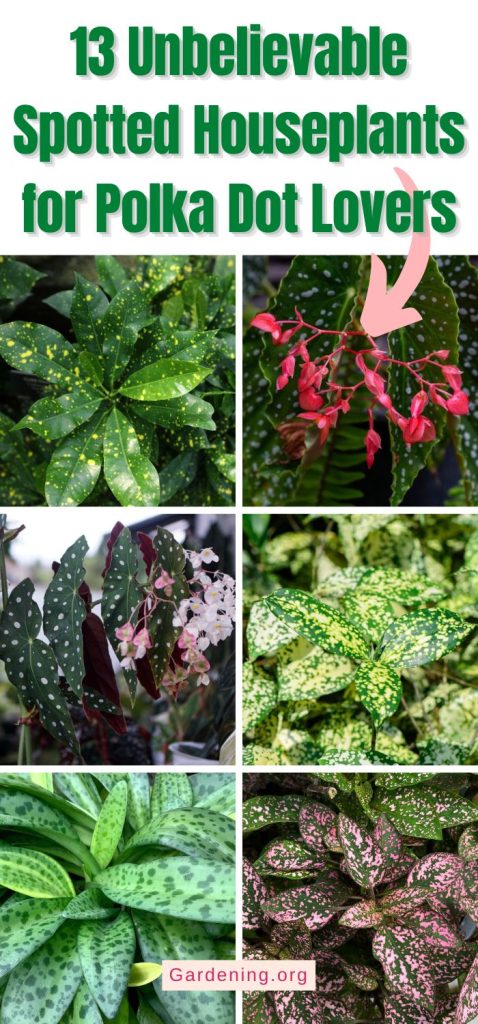
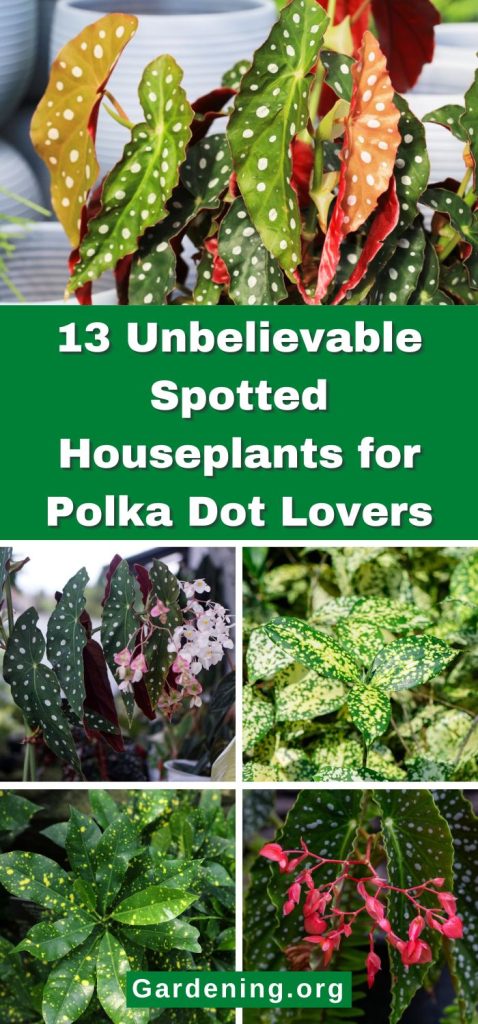
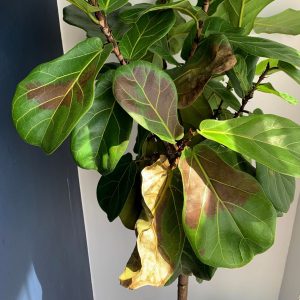
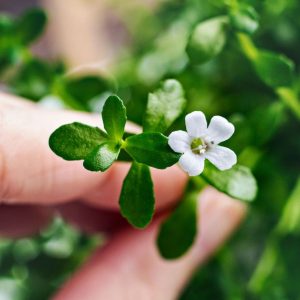
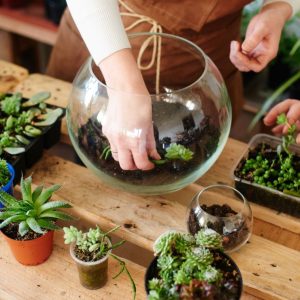
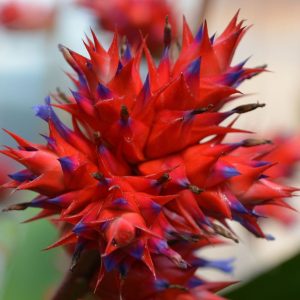
Leave a Reply